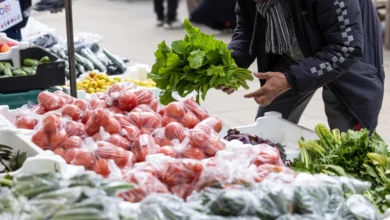The Taj Al-Sultan restaurant in Al-Azhar square at the entrance to the Khan al-Khalili is an excellent restaurant. But great food is only a part of its splendor. I love language: how it’s used, how it transforms, how it is improved by its hybridization. On our way out the door, after the wonderful meal that I will get to in a moment, I picked up a flier advertising the restaurant’s “royal flavors of Arabia and India.” A little lower, in a flash of bold linguistic inspiration, the same flier described the restaurant’s “majesticity.” Now there is a word. Who cares that my computer is screaming at me to fix it by the squiggly red line underneath. Majesticity should be a word, and as far as I’m concerned, it is now. What a wonderful creation, a noun for something majestic, with the added advantage of having an onomatopoeic zip to it.
Majesticity. Yes, Taj Al-Sultan is full of majesticity. Let’s start with the location. At the entrance to the Khan al-Khalili, a stone’s throw from Cairo’s best mint tea at Fishawy, less then five minutes away from the gloriously redone Muezz al-Din Street, it has a rooftop terrace with a beautiful view over the old city, looking down into the Hussein and Al-Azhar mosques. I’ve always thought that the old city needed a boost in the dining department. There were plenty of places that provided basic sustenance, and the Oberoi’s Naguib Mahfouz restaurant, which strikes me as being tired and staid, used to being the only place in the area clean enough to show off to bussed-in tourists.
Taj Al-Sultan, open for about a year now, has changed all this. Its opening sits within an overall re-awakening of a great swath of society to the glories of Islamic Cairo. Now, with the opening of the breathtakingly beautiful Muezz al-Din Street, along with all the mausoleums, museums, sabeels and cultural centers along its path, and beautifully crafted places like the Riad Hotel, Islamic Cairo hasn’t had so much thoughtful attention given to it since the Fatimids were run out of town. Farouk Hosni may not be able to keep Van Gogh in the Mohamed Khalil museum, but he sure has spearheaded a beautiful creation on Muezz al-Din.
Taj Al-Sultan’s interior, as you might expect from its name, is gloriously and thoroughly oriental—traditional paintings on the wall, plush Harem-esque seating, sumptuous chandeliers, elegant woodwork, Abdel Halim Hafez’s greatest hits wafting through the air.
It’s not exactly a hidden gem. Chances are you’ll join groups of foreign tourists there, not entire busloads, but a substantial following nonetheless. But the fact that it draws in tourists shouldn’t put you off. Taj Al-Sultan’s peaceful idyll is the perfect antidote to a full day rifling through the glorious chaos of the old city.
I was a bit worried about the menu, which claims to serve up two distinct cuisines—Indian and Arabian—alongside one another. In my experience, such an ambivalent stance generally serves up incongruent flavors washing together pell-mell in a spice-confused kitchen. Not so at Taj Al-Sultan. We ordered off of both menus, and were delighted by the results of each. Supposedly the Indian menu is maintained by a resident Indian chef and, as with a few other Indian restaurants in town, he wields his spice rack with wicked aplomb.
In both cases, the breads are excellent. The Indian naan is the real thing, fluffy and dripping in garlicy butter. The local loaves are varied and fresh. The Arabian side of the menu has all the favorites, and is particularly well-stocked with tajines. Our veal with bird’s tongue (don’t worry, this refers to the shape of the pasta, not the contents of the pot) tagine was excellent, as was the butter chicken and spinach with cheese from the Indian menu. I caught my otherwise food ambivalent three-year-old licking the sides of the butter chicken pot; there can be no better recommendation than this. Demonstrating the legitimacy of the Indian side of the menu, the pickle selection that accompanies the meal is world-class and authentic. I have a theory that pickles largely define the quality of an Indian meal, so this bodes well. For dessert, the mahalabeya is world-class, on par with Cairo’s best, almost as good as that served up in Abu Tareq koshari; the crème caramel is adequate, if uninspired.
Taj Al-Sultan’s location, ambience, food quality and service can hardly be improved. Open only in the evenings, its rooftop terrace gives a splendid view of the various goings-on which define life in the old city. The place even has a sense of humor. An arugula salad, known, I am told, for the potency of its effect, is humorously titled “Viagra Al-Sultan.”
For anyone who hasn’t yet rediscovered Islamic Cairo, do so. Be sure to wander down the gloriously restored Muezz al-Din. Once your rambles have exhausted you, there’s only once place to recharge, and that’s Taj Al-Sultan.
Details: 1 Al-Azhar Square, Hussein, Islamic Cairo. Open daily noon to 1 AM; open later in the summer. Rooftop terrace open nightly from 7 PM. Extravagant lunch for two: around 300LE. No alcohol. Tel: 02/2787 7273; Web: www.tajalsultan.com.




